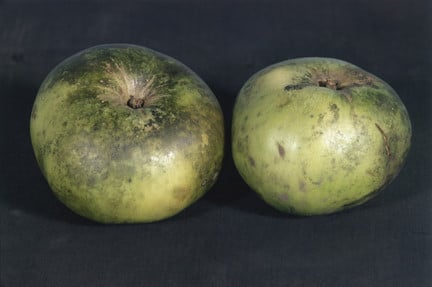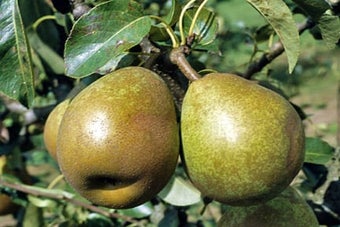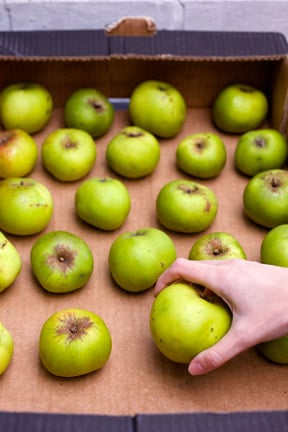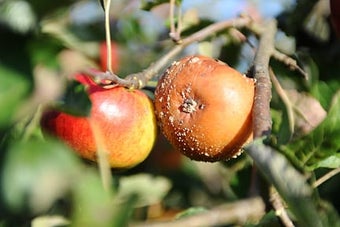
Quick facts
Common name - Sooty blotch and flyspeck
Scientific name - Gloeodes pomigena (sooty blotch), Schizothyrium pomi (flyspeck)
Plants affected - Apple, pear, plum, citrus
Main symptoms - Sooty, dark green to black patches on the fruit (sooty blotch), clusters of tiny black dots on the fruit (flyspeck)
Caused by - Fungi
Timing - Summer and early autumn. Sooty blotch may continue to spread during storage of the fruit
What are sooty blotch and flyspeck?
Sooty blotch and flyspeck are fungal blemish diseases of fruit. The diseases are sometimes found together on the same fruit, as they are favoured by very similar weather conditions, but they can be distinguished from each other by their symptoms.
The fungal growth develops on the fruit surface, and can be rubbed off (although sooty blotch may leave a discolouration behind).
N.B. Sooty blotch is caused by a different fungus from those responsible for another problem known as sooty mould. Sooty mould (caused mainly by species of Alternaria and Cladosporium) is another type of superficial, dark fungal growth, found commonly on the aerial parts of plants affected by -sucking insects such as aphids and whiteflies.
Symptoms
You may see the following symptoms:
Sooty blotch (Gloeodes pomigena):
- Patches of dark-green to black, sooty fungal growth develop on the surface of the fruit
- Individual patches are 5mm-1cm in diameter, circular to more irregular in shape, with a diffuse margin
- The patches may merge together to cover a large percentage of the surface area
- The growth can be rubbed off, but often leaves a brown discolouration on the fruit surface
- Fruit are affected on the tree, but the patches may continue to develop during storage
- In severe cases fruit size can be reduced
Flyspeck (Schizothyrium pomi):
- Can be found on its own or together with sooty blotch
- Clusters of tiny black dots develop on the surface of the fruit
- The clusters are often irregular in shape, and usually about 1-3cm (¾-1¼in) diameter
- The clusters may merge to affect a large percentage of the surface area
- The growth can be rubbed away and, unlike sooty blotch, does not usually leave any surface discolouration behind
Control
Non-chemical control
- Regular pruning, to produce an open structure with good air circulation, will discourage growth of the sooty blotch and flyspeck fungi (and also some other fungal diseases such as apple and pear scab)
- the fruit will also allow more air to circulate around them
- Storing fruit in appropriate conditions (i.e. cool and well-ventilated) will discourage further development of sooty blotch. Don’t store fruit that are already significantly affected by this problem
Chemical control
There are no fungicides available to home gardeners for use against sooty blotch and flyspeck.
Biology
Both of these diseases are favoured by warm, wet weather conditions. In addition to the tree fruit listed, the fungi can affect the leaves, twigs and fruit of a wide range of other woody and herbaceous plants. The effect of the fungal growth on most of these other hosts is totally insignificant, although both sooty blotch and flyspeck can sometimes cause blemish problems on the leaves of orchids, and the flyspeck fungus also causes a foliar disease of Dianthus known as greasy blotch.
The fungi overwinter on the twigs of the fruit trees, and on twigs, stems and leaves of other woody and herbaceous plants in hedgerows, ditches, etc. Spores are produced in spring and early summer and reach the developing fruit. Further spores are produced during the summer from the growth on the fruit to continue the spread of the problem.
The growth of the flyspeck fungus develops entirely on the surface of the fruit. The sooty blotch fungus can sometimes penetrate just below the , which is why a discoloured patch often remains after the surface growth is removed.





